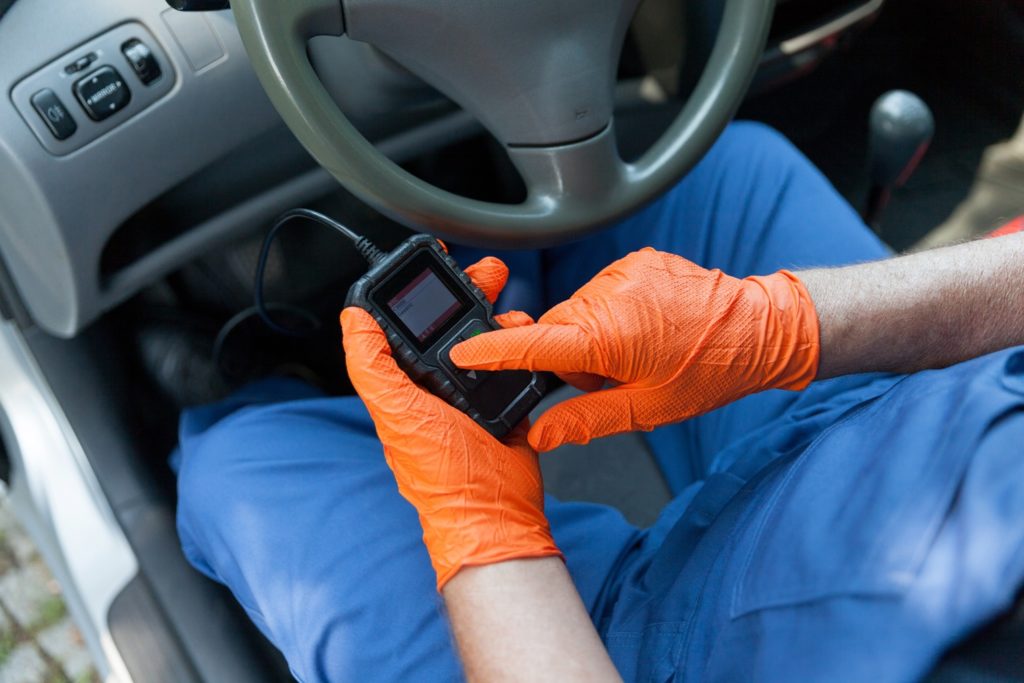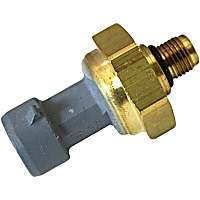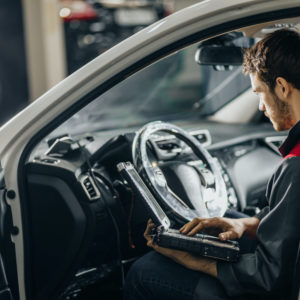P0105 is an engine trouble code related to a possible issue with your vehicle’s manifold absolute pressure (MAP) sensor and/or barometric pressure (BARO) sensor.
Here’s what P0105 means, its causes and symptoms, and the best way to approach the issue.
What Does the P0105 Code Mean?
Diagnostic Trouble Code (DTC) P0105 stands for “Manifold Absolute Pressure/BARO Circuit Malfunction.” The code is logged once the vehicle’s powertrain control module (PCM) perceives a possible issue with the MAP sensor or BARO sensor circuit.
A MAP sensor is used by the PCM to monitor engine load. This sensor is designed to react to changes in engine manifold pressure. An engine that is under load is expected to have greater manifold pressure compared to a coasting engine. The MAP sensor voltage signal is expected to change continually as engine load changes.
A vehicle’s PCM needs to monitor this data because changes in engine load affects other systems in the vehicle. These changes may also affect fuel injection and ignition timing.

A BARO sensor typically works just like a MAP sensor, but it can detect more minute changes in atmospheric air pressure.
The only difference between the two sensors is their location. A MAP sensor is usually connected to the manifold. On the other hand, a BARO sensor is vented directly to the atmosphere. In most vehicles, the two sensors are integrated into a single sensor.
The PCM monitors the integrity of the MAP/BARO sensors and their circuit(s). When the module detects a problem, it turns on the check engine light and stores P0105 in its memory.
You can pick up more information that can help you resolve P0105 in our comprehensive technical discussion about intake manifold pressure.
Note: The definition of code P0105 may be different depending on the vehicle manufacturer. Consult the appropriate repair manual or repair database for the exact code definition.
What are the Possible Causes of the P0105 Code?
Here are the possible triggers of this trouble code:
- Disconnected or plugged MAP sensor vacuum hose
- Faulty MAP sensor
- Faulty BARO sensor
- Malfunctioning throttle position sensor (TPS)
- Circuit issues, such as damaged wires or poor connections
- Intake manifold vacuum leaks
- Faulty PCM
What are the Common Symptoms of a P0105 Code?

Below are some of the symptoms related to this error code:
- Illuminated check engine light
- Poor engine performance
- Engine misfire when under load or when idle
- Engine fails to idle
- Engine backfire (through the tailpipe)
In some cases, your vehicle may not show any noticeable symptoms except for an activated check engine light.
How to Diagnose the P0105 Code
Diagnosing any vehicle issue is challenging, especially if you don’t have the automotive expertise and the right tools to get the job done. Given that there are several possible issues that may cause this error code, identifying the root cause of the problem may not be easy.
If tinkering with cars is not your thing, it would be best to take your vehicle to an auto repair shop. A mechanic would know how to properly diagnose the problem and rule out any other issues that may be causing similar symptoms.

If you plan on troubleshooting the P0105 fault code yourself, be sure to consult a vehicle-specific repair manual and/or an online repair database for helpful tips and information about diagnosing a MAP sensor circuit error code.
How to Fix the P0105 Code
P0105 may be a standard diagnostic trouble code, but the diagnostic and repair procedures may vary depending on the specific vehicle that you’re trying to fix.
Remember that modern vehicle systems are complex, and there may be differences in engine specifications and circuitry depending on the type of vehicle that you own. For example, a confirmed fix for a Toyota P0105 code may not resolve a code P0105 on a Nissan.
A vehicle-specific repair manual can help you identify the appropriate repair procedure for your vehicle. You may also subscribe to an online repair database to get factory repair information.
How to Get a New MAP Sensor and TPS
Diagnosing your vehicle’s P0105 code is just the first step. To fix it, you’ll have to replace the defective part that’s causing it. Otherwise, you might end up with an engine that misfires or won’t idle. Luckily, getting a brand-new MAP sensor and TPS is fast and easy with CarParts.com.
At CarParts.com, you’ll find a wide selection of MAP sensors and TPS that are sourced from only the most trusted manufacturers in the industry. Enjoy a hassle-free shopping experience, thanks to our lifetime replacement guarantee. If you ever need to replace your order, you can simply file a claim through our Returns Center and ship your original part back to us.
Don’t wait until your faulty MAP sensor or TSP leads to more engine issues before replacing it. Check out our selection of high-quality manifold absolute pressure sensors and throttle position sensors at CarParts.com, and get one for your vehicle today!
Products Mentioned in this Guide
Any information provided on this Website is for informational purposes only and is not intended to replace consultation with a professional mechanic. The accuracy and timeliness of the information may change from the time of publication.


 MAP Sensor
MAP Sensor
 BARO Sensor
BARO Sensor
















